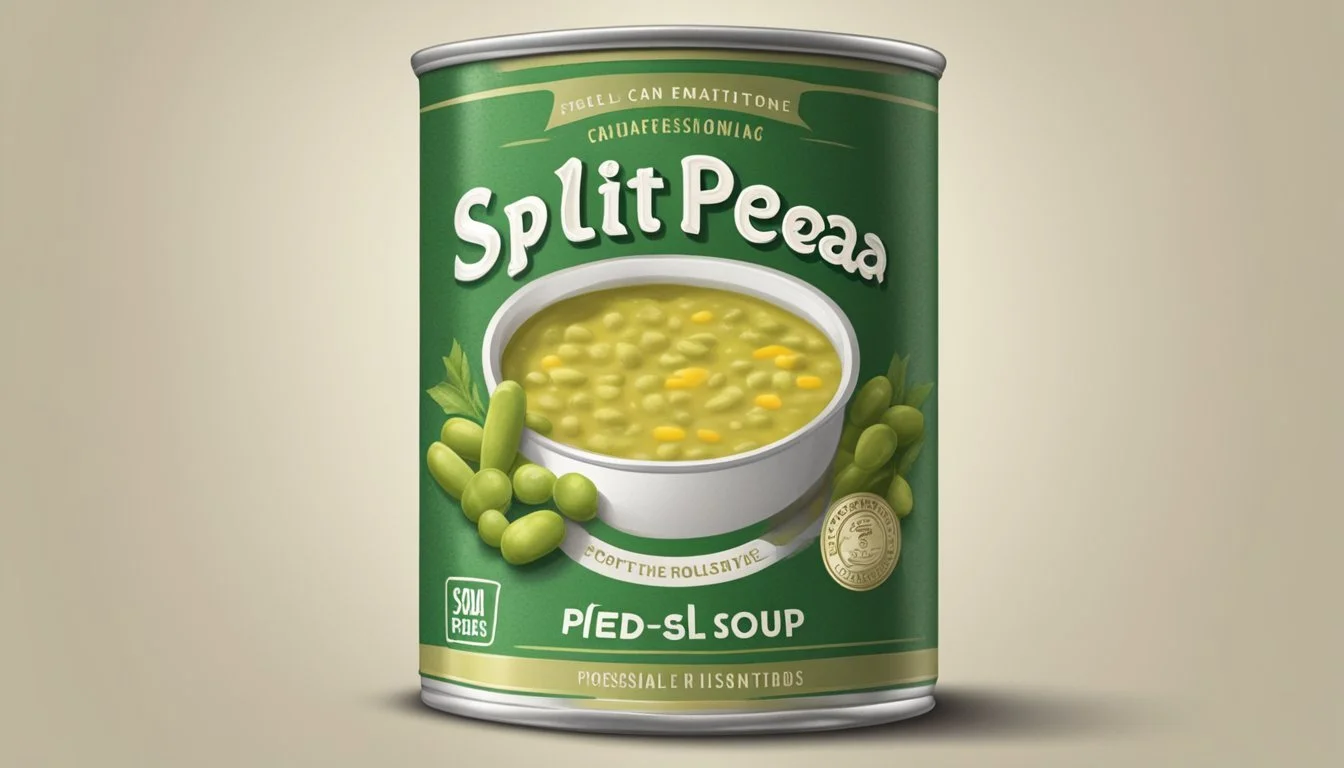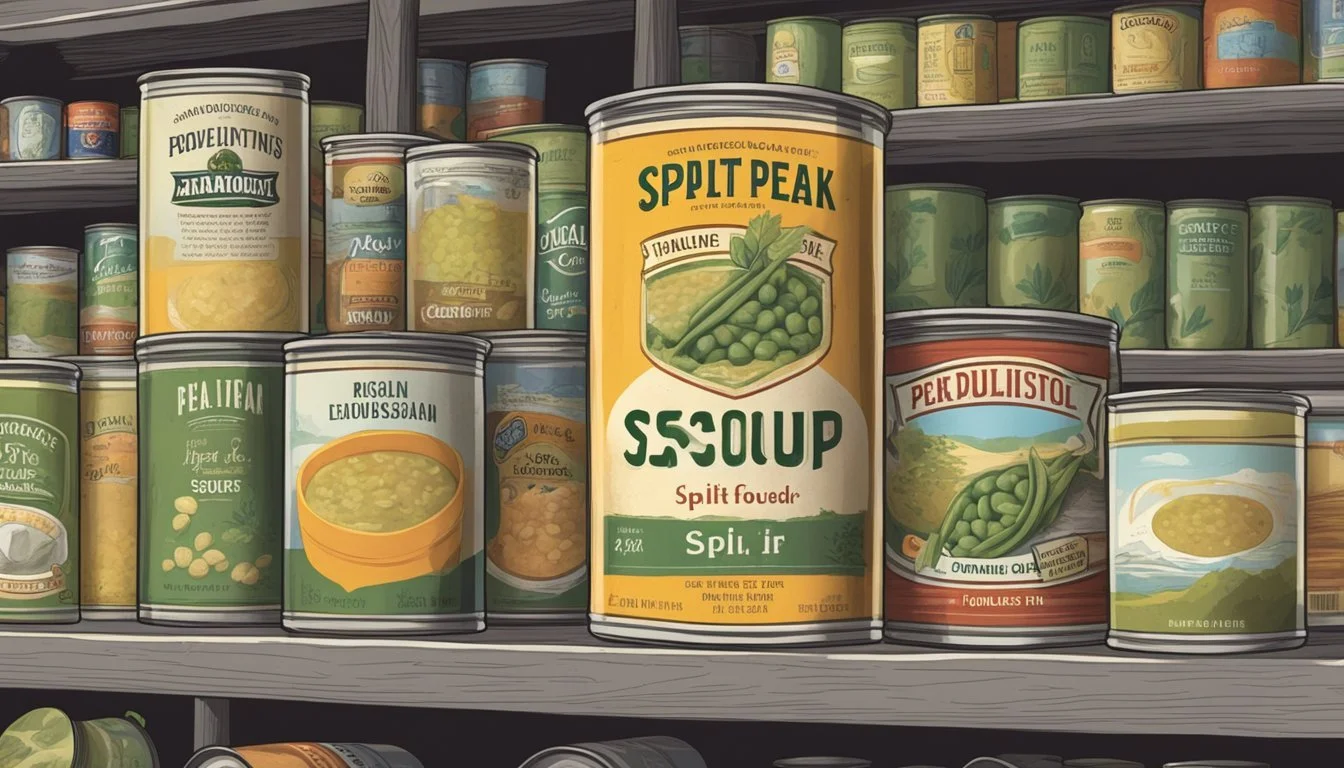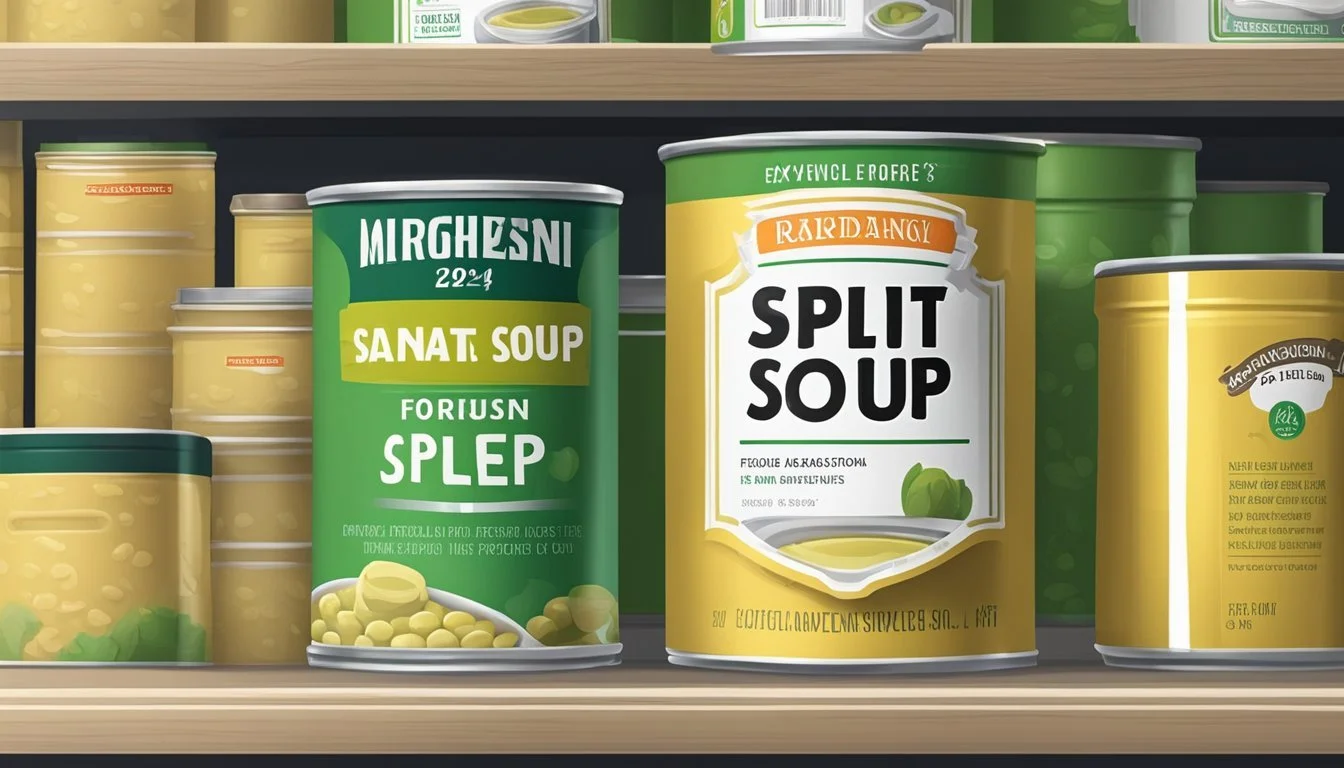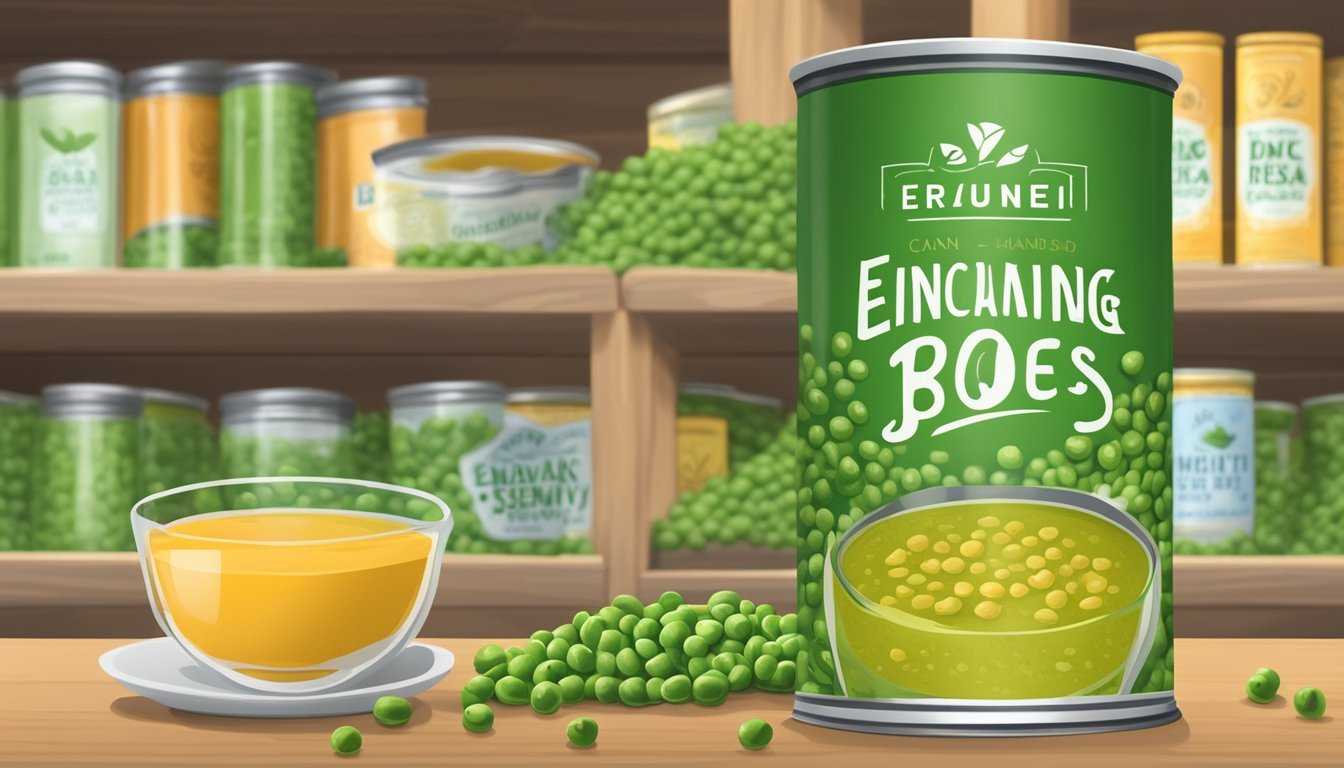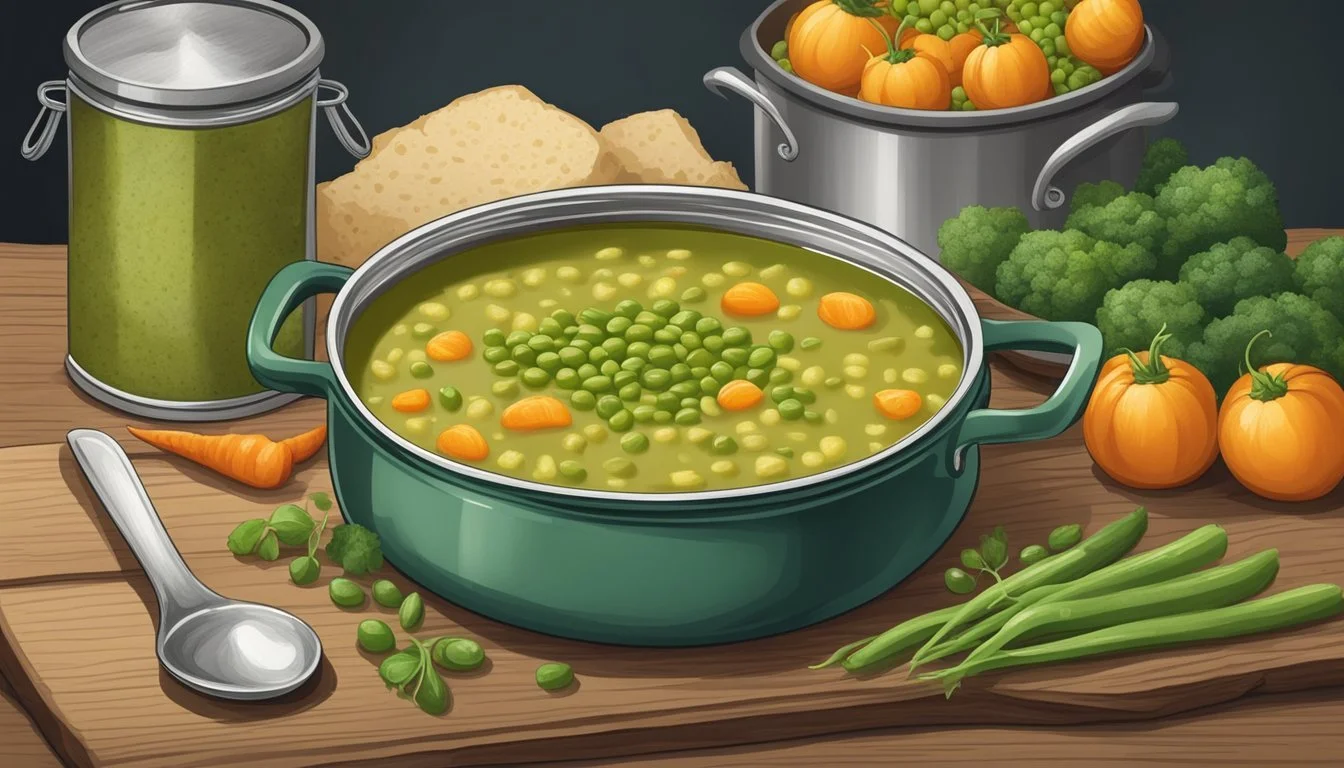Does Canned Split Pea Soup Go Bad?
Storage Tips & Shelf Life Explained
Canned split pea soup, a pantry staple, can boast an impressive shelf life when stored appropriately. If kept in a cool, dry place, unopened canned split pea soup can last anywhere from 2 to 5 years, ensuring a reliable and nutritious meal option whenever needed. Time and proper storage play crucial roles in maintaining the quality of canned soups.
Shelf life isn't just about duration; it’s about maintaining peak flavor and nutritional value. Although manufacturers provide a "best by" date as a guideline, many canned soups remain safe beyond this date if the can is intact and undamaged. Factors like rusting, bulging, or severe dents can compromise the safety of the contents.
Even with the longevity of canned split pea soup, signs of spoilage should never be ignored. An off odor, unusual flavor, or appearance, and the presence of mold are clear indicators that the soup is no longer safe to consume. Proper vigilance ensures that a convenient meal doesn't turn into a health hazard.
Understanding Canned Split Pea Soup
Canned split pea soup offers convenience along with nutritional benefits. Key aspects to consider include ingredients, nutrition, and the canning process that ensures preservation.
Ingredients and Nutrition
Canned split pea soup typically includes split peas, vegetables like carrots and potatoes, and sometimes ham for added flavor and protein.
Nutrition-wise, it is rich in protein and fiber, making it a hearty option. Split peas, the main ingredient, are packed with protein, important for body repair and growth. They also provide a good amount of dietary fiber, which aids in digestion and helps maintain a feeling of fullness.
In addition to protein and fiber, vitamins and minerals from vegetables like carrots and potatoes enhance the nutritional profile. Soup recipes can vary, but reading the nutrition label can provide specific details about calories, fat content, and other nutrients.
Canning Process and Preservation
The canning process involves cooking the soup to a high temperature to kill any bacteria, sealing it in cans, and then heating those cans to ensure a vacuum seal. This method not only preserves the soup but also locks in its nutritional value.
Properly canned split pea soup can last 3 to 5 years unopened if stored in a cool, dry place. Its safety and quality are maintained, given the can remains in good condition. Refrigeration extends the soup's shelf life by 3 to 4 days once opened, while freezing can maintain quality for about 3 to 4 months.
Preservation through canning makes split pea soup a reliable pantry staple, ensuring year-round availability without compromising on nutrient retention.
Quality Indicators
Evaluating the quality of canned split pea soup includes looking at its visual and textural attributes and assessing its flavor quality. These factors help determine whether the canned soup is still good to eat.
Visual and Textural Attributes
First, inspect the color of the soup. Fresh split pea soup typically has a green or greenish-brown hue, depending on the ingredients used. If the color has darkened significantly or appears off, it may suggest spoilage.
Next, consider the texture. The soup's density should be fairly consistent with a thick, almost creamy appearance. If you notice an unusually thin consistency or excessive separation of liquid, this might indicate it's past its prime.
Check for any bloating or bulging in the can, as this suggests bacterial contamination. Additionally, if there is any mold growth or a foul odor once the can is opened, the soup should be discarded immediately.
Assessing Flavor Quality
Flavor is a crucial indicator of the soup's quality. Upon opening the can, take note of the aroma. A fresh can of split pea soup will have a savory, earthy scent. If the scent is sour or metallic, it could be a sign the soup has spoiled.
Once heated, taste the soup. High-quality split pea soup will have a rich, hearty flavor. The herbs and seasonings should be evident, and the peas will taste fresh. Deterioration in flavor might present as blandness or an off-taste, suggesting it's no longer suitable to eat.
Consistency in flavor is also key. If the soup flavor seems diluted or overly salty, the ingredients might have started to degrade over time. Always compare the soup's taste and smell to your previous experiences with the product to gauge its current quality.
Shelf Life and Storage
Commercially canned split pea soup can last for several years when stored correctly. Understanding expiration labels and practicing proper storage techniques can help maintain the soup's quality and safety.
Decoding Expiration Labels
Expiration labels on canned split pea soup can sometimes be confusing. "Best by" and "use by" dates indicate the period when the product is at its peak quality.
An unopened can of split pea soup typically remains at its best for about 3 to 5 years.
Even after these dates, the soup may still be safe to consume if the can is undamaged and stored properly. It's crucial to inspect the can for any signs of rust, bulging, or leaks, as these can indicate spoilage.
Proper Storage Techniques
Storing canned split pea soup in a cool, dry place with minimal exposure to light extends its shelf life. High humidity can cause the can to rust, compromising its integrity.
Once opened, the soup should be transferred to an airtight container and refrigerated. Refrigerated soup should be consumed within 3 to 4 days for optimal freshness.
For longer-term storage, the soup can be frozen in a freezer-safe container and maintained for 3 to 4 months.
Labeling the containers with the date of freezing helps in keeping track of storage time. When ready to use, thaw the soup in the fridge for best results.
Safety Considerations
Ensuring split pea soup remains safe to consume involves recognizing signs of spoilage and taking steps to prevent food-borne illness.
Identifying Signs of Spoilage
Canned split pea soup typically lasts for years, but it can spoil. Check for abnormalities such as bulging cans, which suggest bacteria growth. Leaking cans indicate potential contamination.
Mold is another sign of spoilage. If the soup has an off odor, strange color, or is strangely lumpy, it's unsafe. Inspect the can for any dents or rust, as these can affect the soup's integrity.
Preventing Food-Borne Illness
Store canned goods in a cool and dark place with temperatures between 50°F and 70°F. This limits bacteria growth. Always ensure cans are undamaged before purchasing.
Once opened, transfer leftover soup to a refrigerator within 2 hours. Use sealed containers to keep bacteria at bay. Consume refrigerated soup within 3 to 4 days, or freeze for up to 3 months to maintain quality. Regularly check expiration dates and follow proper storage practices.
Enhancing and Serving
Enhancing canned split pea soup and choosing the right accompaniments can elevate a simple meal into a delightful dining experience. Adjusting seasonings and pairing the soup with complementary side dishes can transform its taste and texture.
Seasoning Adjustments for Improved Taste
To enhance the flavor of canned split pea soup, start with seasonings like salt and black pepper. Adding a dash of lemon juice or vinegar can brighten the soup. Incorporate onion and grated carrots for added sweetness and depth.
Herbs such as thyme and a bay leaf can infuse the soup with earthy flavors. For a touch of richness, consider a splash of cream or a dash of Worcestershire sauce.
For protein, small pieces of ham or kielbasa can make the soup more hearty.
Serving Suggestions
Serve split pea soup with crusty bread or a slice of buttered toast for a satisfying meal. A fresh salad with light vinaigrette or a classic Panzanella pairs well, adding a refreshing contrast to the soup.
Croutons or a dollop of sour cream can add texture and richness. For a more elaborate meal, serve with savory sides like roasted vegetables or a simple coleslaw. The goal is to balance the creamy, savory character of the soup with complementary tastes and textures.
Maximizing Soup Longevity
Proper storage and handling of canned split pea soup can significantly extend its shelf life and preserve its best qualities.
Freezing and Thawing Techniques
Freezing split pea soup is an effective way to prolong its shelf life. To do this, ensure the soup is placed in an airtight container. Avoid filling the container to the brim; leaving some space allows for expansion as the soup freezes.
The optimal temperature for freezing soup is 0°F (-18°C) or lower.
When it comes time to thaw, move the soup from the freezer to the refrigerator. Let it thaw gradually over 24 hours for the best texture and flavor retention. If you're in a hurry, place the container in a cold water bath, ensuring the water is frequently changed. Do not thaw it at room temperature to avoid bacterial growth.
Reheating Stored Soup
Reheating frozen soup requires careful attention to ensure safety and quality. First, transfer the thawed soup to a pot. Heat it over medium heat, stirring regularly to distribute the heat evenly.
For microwave reheating, place the soup in a microwave-safe container. Cover loosely to allow steam to escape and microwave on medium power, stirring every minute.
Whether using a pot or microwave, make sure the soup reaches an internal temperature of 165°F (74°C) to ensure it is safe for consumption. Avoid re-freezing previously thawed soup as this can deteriorate the texture and compromise safety.
Homemade Alternatives
Homemade alternatives to canned split pea soup can offer a fresher and more customizable experience. Key aspects involve preparing and canning your own soup, as well as understanding the benefits of DIY canning.
Preparing and Canning Your Own
To prepare homemade split pea soup, start with basic ingredients: green split peas, vegetables, and your choice of seasoning. Soaking the peas can reduce cooking time.
Cook the soup by simmering the ingredients until the peas are tender. For a smooth texture, use an immersion blender to puree it. Add acidic ingredients like tomatoes only after this process to avoid curdling.
For canning, a pressure canner is necessary due to the low acidity of split peas. Leave 1-inch headspace in jars and ensure the jars are free of air bubbles. Processing time in the pressure canner will depend on altitude; typically, it ranges from 60 to 90 minutes for pints or quarts.
Advantages of DIY Canning
Making and canning split pea soup at home allows control over the ingredients and nutrition. Opt for organic vegetables, use less sodium, or add specific herbs for taste. Homemade soup can exclude preservatives found in commercial products.
DIY canning also provides the flexibility of blending flavors to suit personal preferences. Recipes can include chunks of chicken, vegetable broth, or even different types of peas.
Canning yields a large amount of soup that is shelf-stable for months. This ensures a long-lasting, ready-to-eat meal, reducing the reliance on store-bought, less-fresh options.
Homemade canned soups can be a wholesome and convenient alternative to commercially canned varieties, offering both quality and customization.

